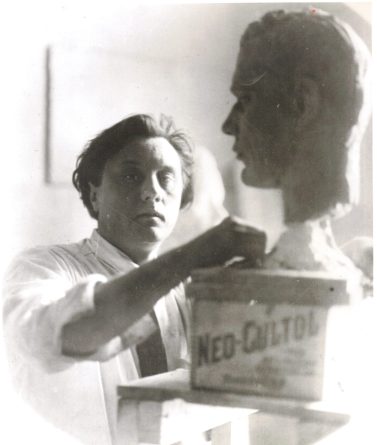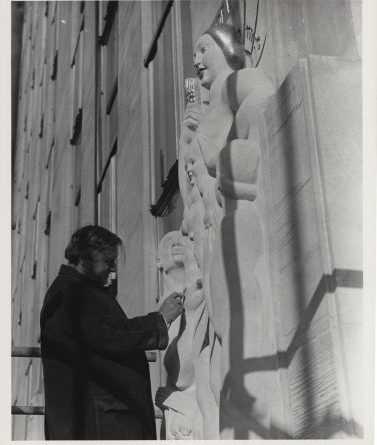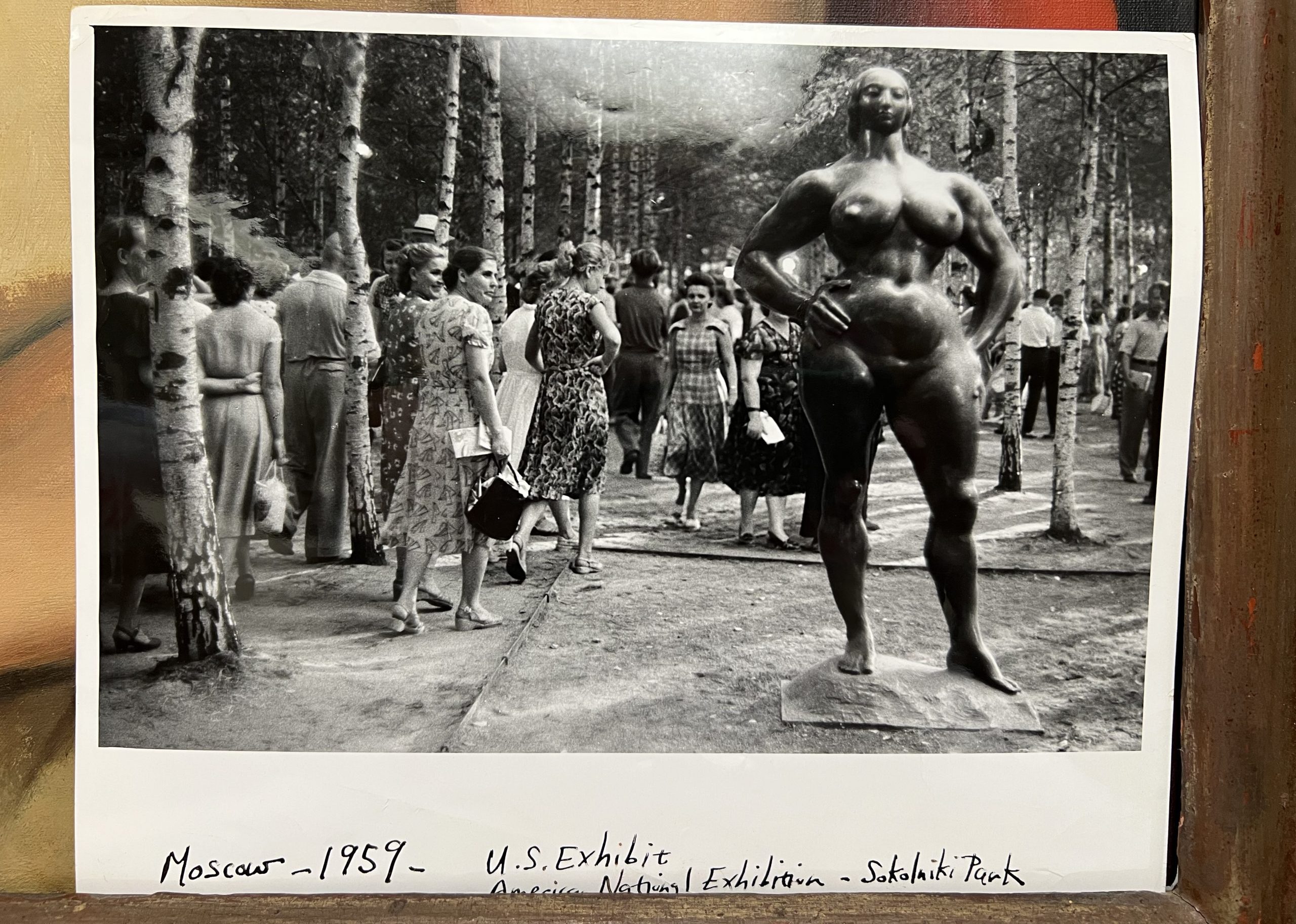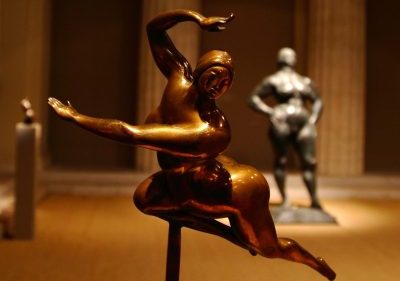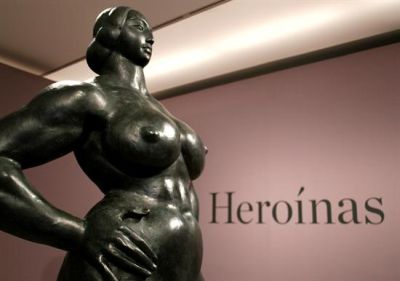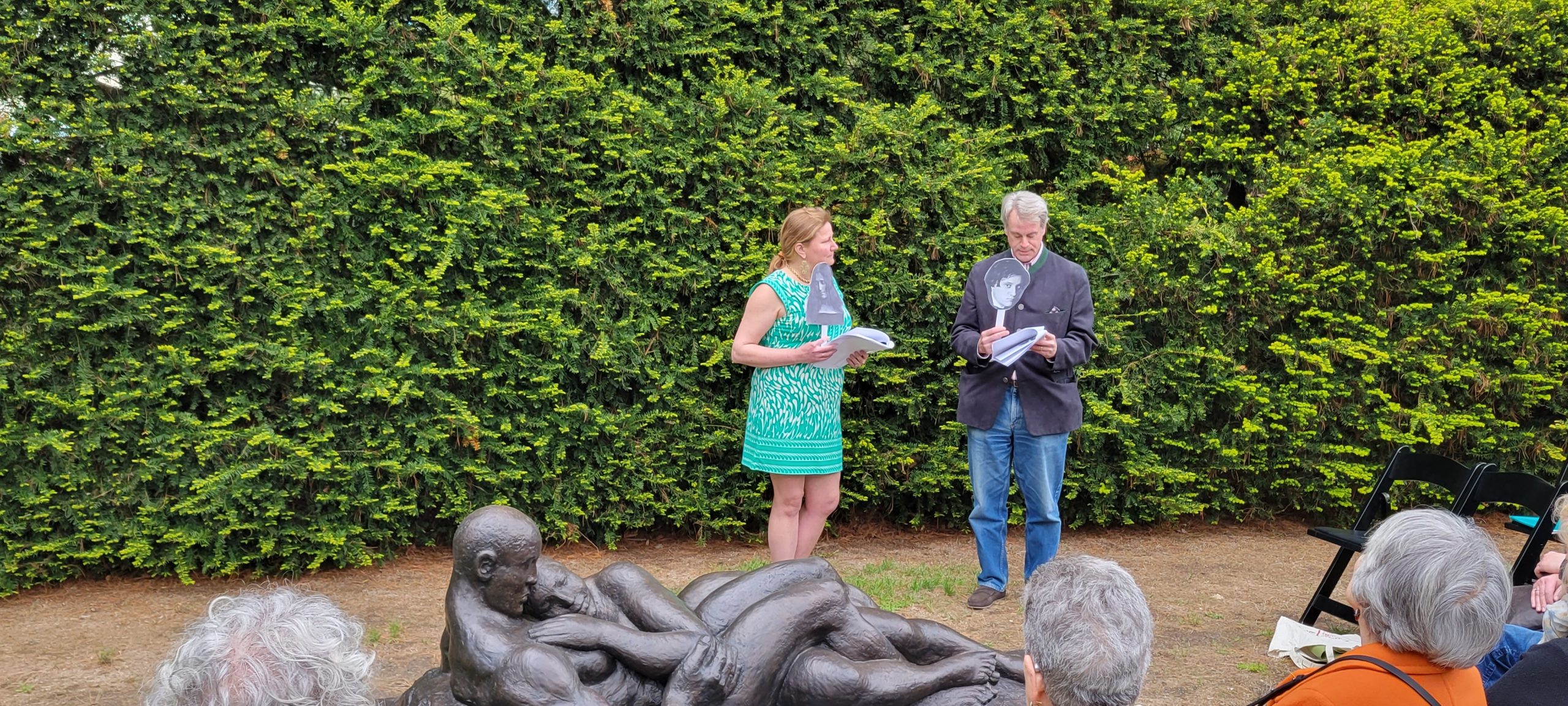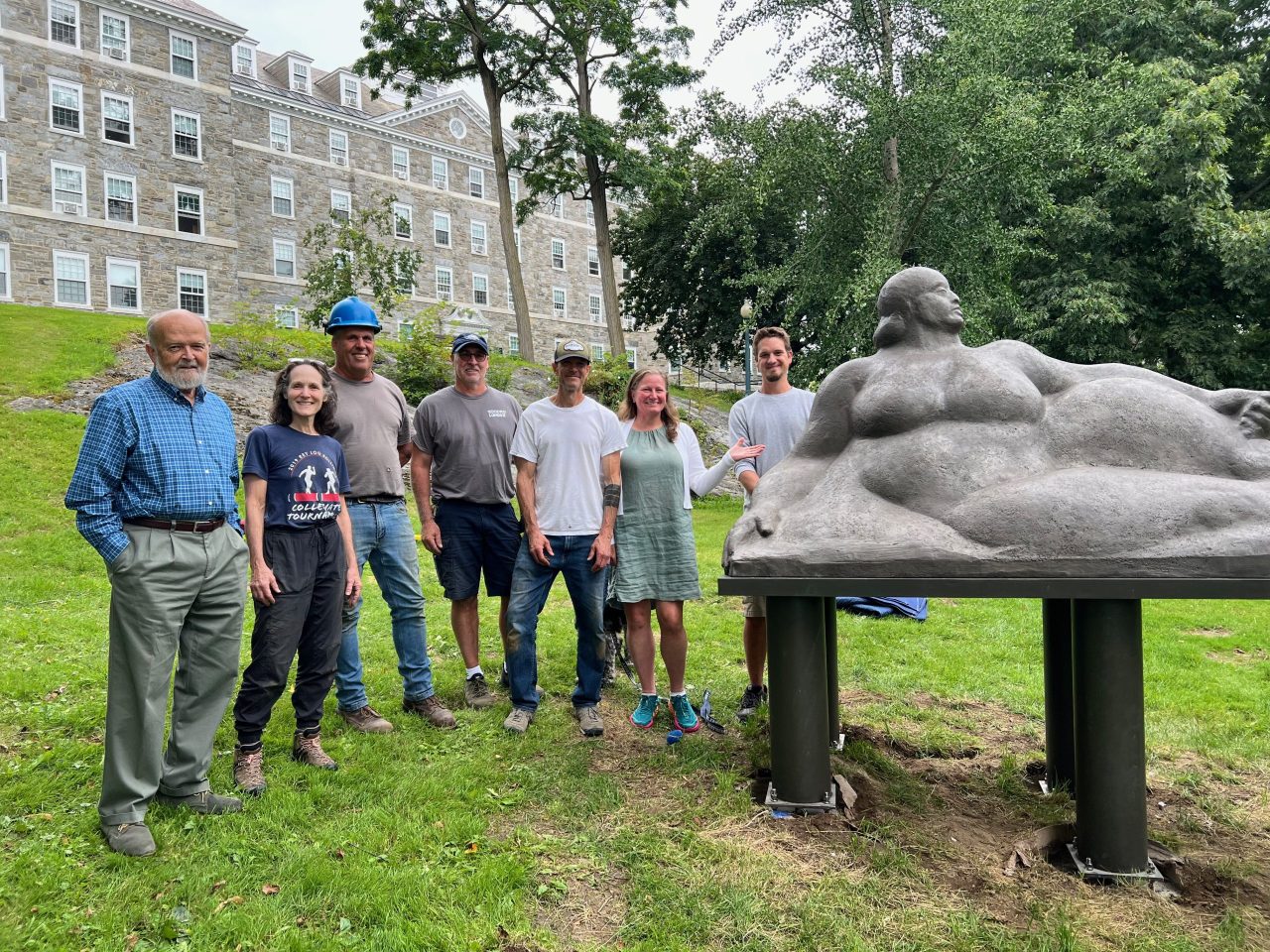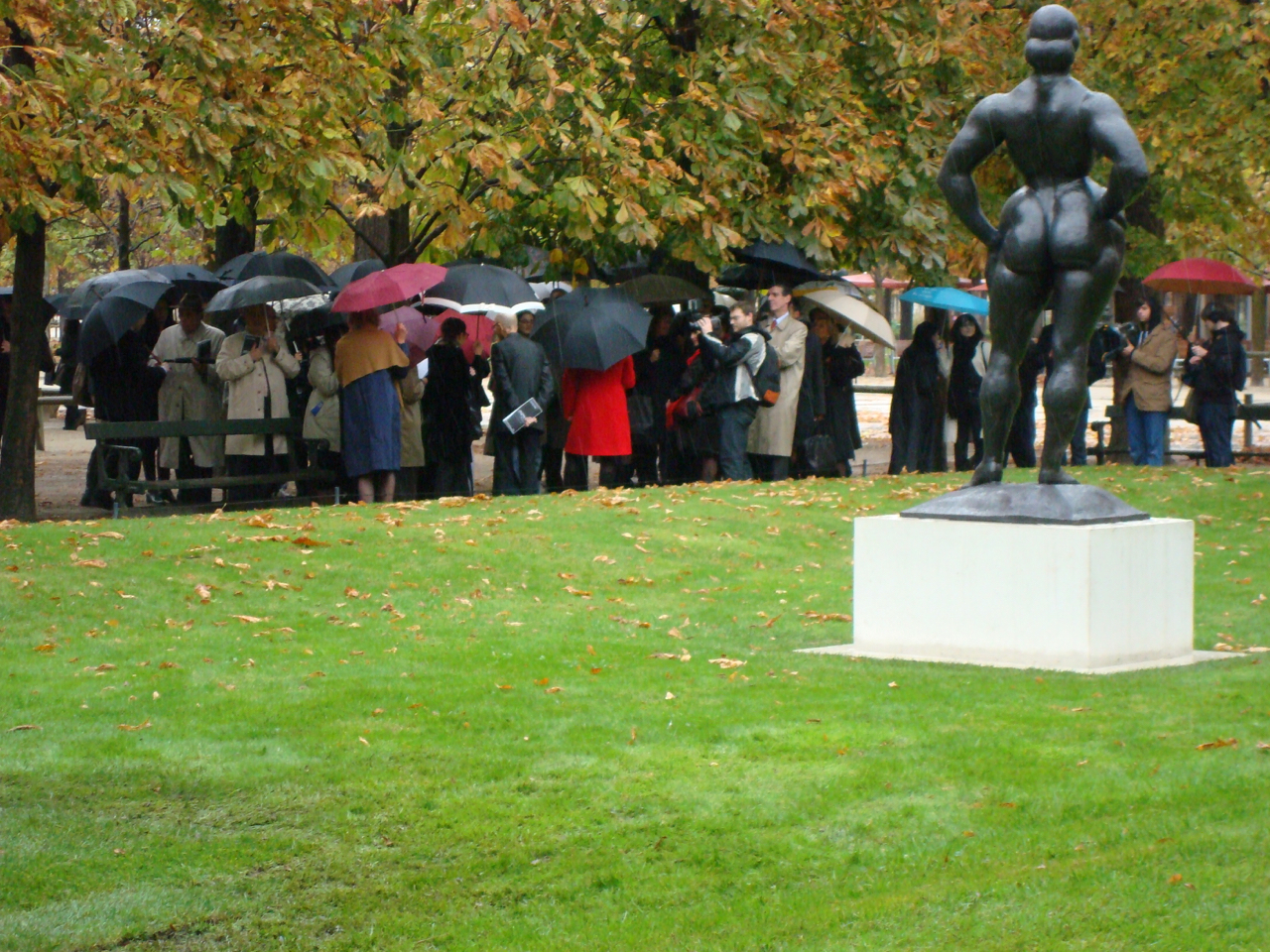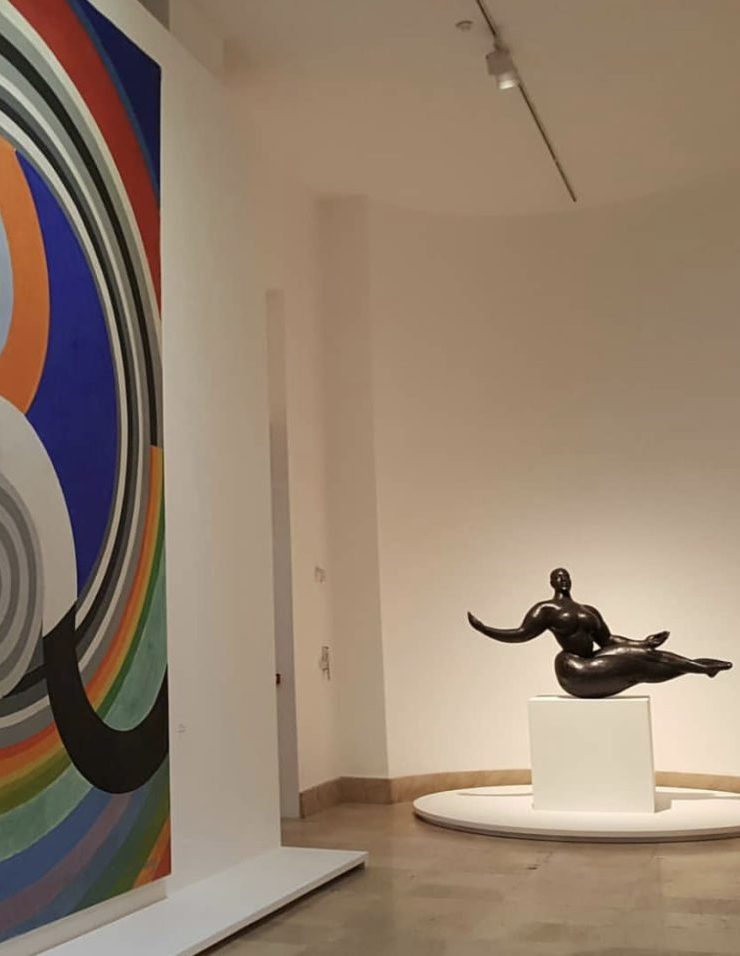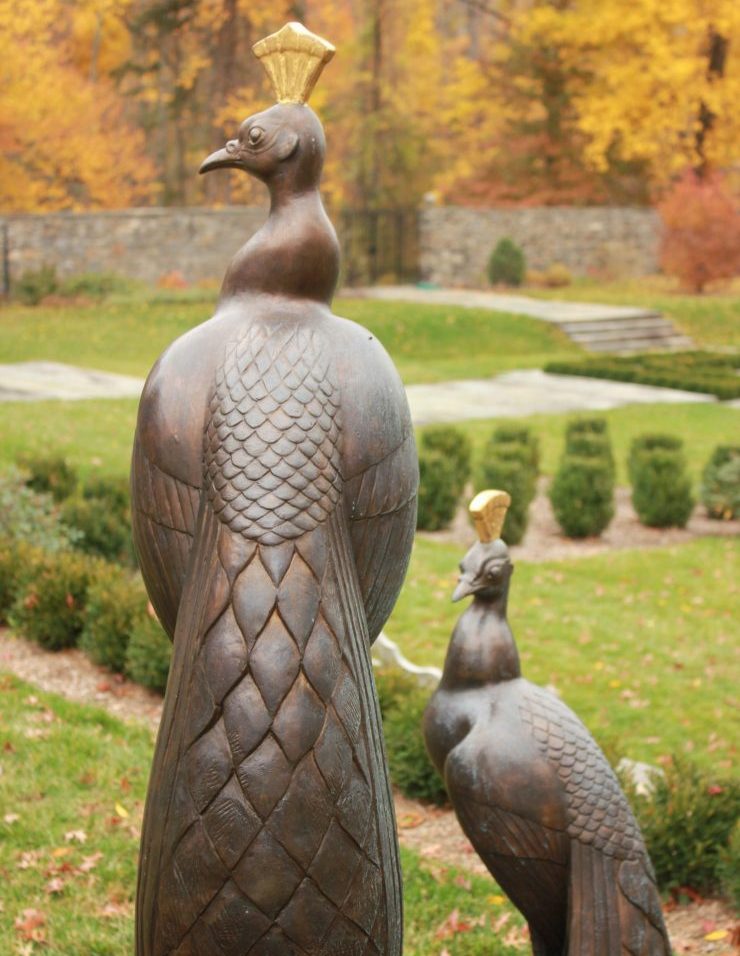The role of foundations can be vital to the continuing legacy of an artist or writer or any particular person from the past who produced works and ideas that are worth saving and promoting in the present day. Whether you are talking about Andrew Carnegie and his extraordinary libraries or Gaston Lachaise (1882 – 1935) and his sculptures, these are people who contributed enormous works of art and created cultural anchors that help to not only moor their own places in cultural history but also to highlight their contexts and environments in which they lived and worked and that make up what we now call art history or cultural preservation.
Preserving artists’ legacies is a way of building communities that support and are interested in the artist’s work and his or her place in their historical context. People are aware of Gaston Lachaise in part thanks to the Lachaise Foundation: He was a prolific artist creating hundreds of sculptures and drawings, and today his work is in museums and private collections around the world.
Born in Paris in 1882, Gaston Lachaise studied sculpture at the École des Beaux Arts from 1898 to 1903. He exhibited at the Annual Salon in 1899, 1901, 1902 and 1904. In 1902/3, Lachaise met Isabel Dutaud Nagle, an American woman ten years his senior, and he fell in love with her and eventually married her. He followed her to the U.S. Paula Hornbostel, Executive Director and a Trustee of Lachaise Foundation, said Lachaise called Isabel “the goddess I seek to express in all my work,” and Isabel in turn said, “his religion was myself and his work.” French-American artist, Louise Bourgeois, put it this way: “So Lachaise had one God. And it was a woman, his wife. He put this particular woman on a pedestal, both figuratively and literally.” (“Obsession,” Artforum, April 1992)
Although from France, Lachaise ultimately became known as one of the leading artists of the American modern movement (1900 to 1940). When he first arrived in America, Lachaise worked for Henry Hudson Kitson in Boston and Paul Manship in New York City and exhibited at the famous Armory Show of 1913 alongside Duchamp, Matisse, Picasso and Brancusi. He had exhibitions also at the Museum of Modern Art (MOMA), the Whitney, and many other well-regarded galleries and private showings.
Throughout his career, he produced hundreds of works, including busts of famous artists, writers and musicians, (Cummings, Marin, Marianne Moore, Varese) décor for buildings (AT&T, Rockefeller Center), and torsos based on the body of his muse/model/wife which are largely oversized and pronounced. A timeline of his work and important times of his life with photographs is included on the Foundation website.
Side of Culture was fortunate to speak with Paula Hornbostel who spoke with us about Lachaise and the role of of the Foundation today.
SOC: We read that the Lachaise Foundation was established in 1963 in accordance with the will of Isabel Lachaise who died in 1957 at the age of 85. Its mission is to protect promote and perpetuate the legacy of Lachaise for the public benefit. Could you tell us a bit about what the foundation does exactly?
PH: One of the ways artist-endowed foundations support and promote an artist’s legacy is through research (and in our case, we have a stalwart resource in the scholar Virginia Budny), exhibitions, loans and placement in museum and private collections. Also, for many years, Mitzi Landau, an American art dealer and curator, organized a traveling exhibition for Lachaise’s work. In fact, it may constitute the longest running traveling exhibition in the history of traveling exhibitions. Often the hosting institution, such as a university museum or gallery, would acquire a work.
Then, in 2003, the gallery representing Lachaise organized for this show to travel through Europe, starting at La Piscine in Roubaix France (with a small version of the show at the Henry Moore Institute in Leeds, UK) traveling to Rome, Cahors, Prague and Budapest. Amazingly, in Budapest, the museum organized a rich program around beauty, love and woman, including an opera singer, a jazz singer, an actress, and a journalist presenting the Woman Naturally radio campaign.
PH Continued: Back in the USA the show traveled to New Orleans, Dallas, Naples, with iterations in Santa Fe and Greenwich, CT (2012). In 2013, the Portland Art Museum, Oregon, hosted a Lachaise exhibition at the same time that it held Cyclepedia, Michael Embacher’s bicycle collection. A fun fact is those taking part in the World Naked Bike Ride were invited into the museum for the price of $1 per item of clothing. One rider advertised the Lachaise show wearing nothing but a sign with the Portland Art Museum logo that said, “Come, see Lachaise’s Nudes!”
In 2016, the historic New York Studio School hosted an exhibit of Lachaise Drawings, bringing his work back to the townhouses that served as the first Whitney Museum. In 2017, the Portland Museum of Art and the Amon Carter Museum of Modern Art in Fort Worth organized a superb sculpture show: A New American Sculpture, 1914-1945: Lachaise, Laurent, Nadelman & Zorach. You can learn more about Lachaise’s tools installed at the Portland Museum of Art on the museum’s website. It really does take a village to keep an artist’s legacy alive.
And, speaking of villages, New York City has been a wonderful host, facilitating the Foundation to share works with the public in remarkable places, from Tramway Plaza in Manhattan to the Bartow Pell Mansion in the Bronx to the new Hunters Point South Park in Long Island City, where for a year during the pandemic (2020-2021) Floating Woman graced this brilliantly designed oasis. The Queensboro Dance festival performed a welcome and a farewell dance, both set to the music of Chopin.
The foundation was thrilled with the positive acceptance. Several park-goers expressed dismay at seeing its removal, “No one told us she was leaving” and “I come especially to this place to do my yoga with Her.” On National Women’s Day, an artist pasted collages of famous women who changed the world all over the base of this beautiful buoyant homage to Woman, woman with a capital W, which is how Lachaise referred to his sculptures inspired by Isabel.
These exhibitions, loans, acquisitions are ways for an artist to stay relevant today and to send a message that their creations were important then and now. Art can be a connection through the years.
SOC: Managing the artist’s assets and physical property also may be part of the responsibility of a foundation. Could you tell us what this means for the Lachaise Foundation? Does this include the artist’s studio or his casts?
PH: The Foundation maintains the artist’s original plaster models and many lifetime casts in bronze and also stone. We also have hundreds of drawings by the artist, some private, not to mention boxes of poems by Isabel, who published one poem we know of during her lifetime, under the pseudonym Isabel Cyr.
There are many addresses in NYC where Lachaise kept his studio, but he was constantly being evicted until a kind patron such as Lincoln Kirstein or Edward Warburg could help him cover the rent. The foundation is working on having a plaque put up at one of these studios on 8th street. The studio beside his home in Georgetown Maine is now privately owned but it is the dream of the foundation to one day fill it with his works again so that the public might have access to his work in an original setting that meant so much to the artist and his wife.
The foundation works with museums to place works at appropriate and important times. Most recently, to mark the 100th wedding anniversary of artist Georgia O’Keeffe and photographer Alfred Stieglitz, the Foundation is having special casts made of Lachaise’s portrait of Stieglitz. While the Met owns Lachaise’s alabaster portrait of O’Keeffe, his portrait of Stieglitz could not until this year be seen in any museum except on loan from Lachaise Foundation. Thanks to the casts, the bust of Stieglitz has entered the collection of the National Gallery in DC, with the Eastman Museum in Rochester and Fisk University in Nashville to follow later this year. The process of making bronze casts is time-consuming and part of the process is the wax pattern that has to be completed.
SOC: Where else can we see works by Gaston Lachaise?
PH: You can go to the Whitney Museum of American Art on Gansevoort Street (the 7th floor) and see Elevation or you can walk into the lobby of the AT&T building at 195 Broadway (housing also the store Anthropologie and the restaurant Nobu Downtown) and see his frieze of cavorting putti.
You can also sneak off the Hutch (southbound, take exit 3 to Orchard Beach/City Island) to see the peacocks at Bartow-Pell Mansion Museum, or fly to Paris and visit the Musée d’Art Moderne to see Floating Woman 1927, then walk through the Tuileries gardens, to admire Standing Woman, 1932, who has been on loan to the artist’s home town since 2008. You can also walk up the steps of the Met and look left at the Memorial to JP Morgan (carved by Lachaise), or go to the Sleepy Hollow Cemetery in Tarrytown, where, for the mausoleum of William Rockefeller, Lachaise carved a copy of the Greek relief found at Eleusis, of Demeter and Persephone with a boy who might represent Triptolemos. Last but not least, you can catch the exhibition “Deco at 100” on view at the Nassau County Museum of Art in Roslyn where three works by Lachaise are on view through June 15, 2025.
Another place you can see Lachaise’s work on permanent display is at Rockefeller Center. In 1932-33, he created four reliefs for what is now 1250 Avenue of the Americas and part of Rockefeller Center. These four allegorical stone carvings in Indiana limestone express ideal aspects of the development of modern civilization: Genius Seizing the Light of the Sun (the development of electricity and communications), The Conquest of Space; The Gifts of Earth to Mankind (an acknowledgement of spirituality), and The Spirit of Progress (a reference to the bond between capitalism and the unions during the building of the Center).
Also, in 1935, Lachaise completed two panels over the entrance to the International Building at 45 Rockefeller Plaza. As was reported by the Herald Tribune in 1935, other artists included the Picirilli Brothers, Isamu Noguchi, Paul Manship, sculptor Lee Lawrie and Rene Paul Chambellan.
John D. Rockefeller Jr’s vision was for Rockefeller Center to be a place where New Yorkers could come and surround themselves with art and motifs that celebrated the best of the human spirit. Even today, the Center is a sort of community and public museum not only for its building and reliefs but also the rolling exhibitions that are displayed in the Fifth Avenue lobby as well as in the halls below are a testament to the continuing legacy of the Rockefeller vision.
During his lifetime, Lachaise underwent much criticism which led him to doubt even his own sanity, said Paula Hornbostel. In trying to understand an artist and why he or she was making and creating whatever it was at the time, it is important to go the source. In 1935, Gaston Lachaise said, “I should try to explain perhaps that what I am aiming to express is the glorification of the human being, of the human body, of the human spirit, with all that there is of daring, of magnificence, of significance. My method is a sublimation and the amplification of what is significant.” This was from an article in the New York Herald Tribune on Jan 14, 1935 that was entitled “Lachaise finds Museum Open to Giant Nudes – the Modern Art Institution to have One Man Show for Glorifier of Woman—Ten Year Battle Is Won.
SOC: We have read that there is an emerging artist-endowed foundation field in the US. The Artist as Philanthropist: Strengthening the Next Generation of Artist-Endowed Foundations, is a two-volume report produced by the Aspen Institute’s National Study of Artist-Endowed Foundations under the Study Director, Christine J. Vincent, and is meant to be a guide for artists and their lifetime foundations. Do you, as a director of an artist foundation have thoughts about this? Do all important artists have foundations? If they don’t, is their legacy lost? Do you believe that all artists should or could be creating foundations? Is this something for living artists to pay attention to? It seems that Gaston Lachaise would be happy that Rockefeller Center is still standing and that his wife created the foundation to protect his works and that there is a group, a community of appreciators and collectors who support Lachaise’s work and his legacy.
PH: Christine Vincent’s work at the Aspen Institute has noticeably helped strengthen the impact of art stewardship and cultural philanthropy. And, long may the Rockefeller Center stand tall and proud, a beacon of American business, hope and art.
By Victoria Larson, publisher of Side of Culture, with Paula Hornbostel, director and trustee of Lachaise Foundation.
Top Photo: Floating Woman on loan to the New Hunters Point South Park in Long Island City, where, for a year during the pandemic (2020-2021), she graced this brilliantly designed oasis of indigenous grasses and views of Manhattan across the East River



